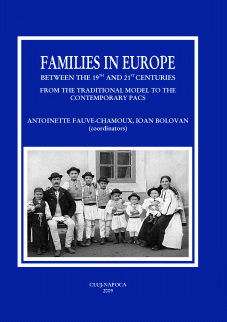The Big and the Small Fishes
Regional Aggregation, Socioeconomic ‘Culture’ and the
1st Demographic Transition in Southeastern Austria/Styria about
The Big and the Small Fishes
Regional Aggregation, Socioeconomic ‘Culture’ and the
1st Demographic Transition in Southeastern Austria/Styria about
Author(s): Peter TeibenbacherSubject(s): History
Published by: Centrul de Studiere a Populaţiei
Keywords: Styria; 1st Demografic Transition; Hajnal-line; fertility; natural reproduction
Summary/Abstract: Since J. Hajnal has introduced his thesis of a ‘demarcation’ line from St.Petersburg to Triest in the early 1960ies a fruitful debate has been going on. The line itself was questioned and redrawn by Laslett (1983), Kaser (2001) and Mitterauer (2003), defining a transitional zone in Central Europe and Philipov (2001), passing the line from St.Petersburg to Dubrovnik. Nevertheless, the idea of such a line was supported by these authors and recently by Engelen (2005). At the very latest Szoltysek (2008) has questioned the regional course of the line. Considering regional deviations, exceptional margins and “isles”, the general existence of such a line from the North to the South and from the West to the East (Reher 1998) is proved. This paper deals with the southeastern area of Austria (Styria), which was very close to the line resp. was crossed by the line. It is said, that this was a transitional area between a “western” and an “eastern” pattern concerning household structures and marriage pattern. This paper will concentrate on marriage patterns and fertility in the context of socioeconomic structures within the 1st Demographic transition. These issues will be viewed from different perspectives of regional aggregation, showing different ways of creating marriage and fertility patterns. These variations were caused by different socioeconomic “cultures”, reflecting the term “culture”as an overall frame, embracing different ways of life. Using statistical date from these times we do not have specific “cultural” variables, “culture” has not been measured! Variables like religion or language are respected in this paper as social variables, defining or expressing behavioral rules of a religious or ethnical community. Using statistical data from different aggregation levels (parishes, political districts and special regions) this paper will prove stronger and weaker correlations between marriage and fertility patterns and socioeconomic patterns at about 1900 and throughout the early period of 1st demographic transition (app. 1870 to 1914), using especially socioeconomic hypotheses to explain different patterns and structures. The area examined embraced very different agricultural ecotypes, a mixture of stronger and weaker industrialized regions and even the ethnical distribution of population was strongly bound to coherent regions There were an exclusively German speaking population in the North and South and Slovenes, exclusive to the Southeast of the crownland, covering thus an area from the Alps in today’s Styria to the eastern part of today’s Slovenia (Stajerska).
Journal: Romanian Journal of Population Studies
- Issue Year: 3/2009
- Issue No: Supplement
- Page Range: 289-316
- Page Count: 26
- Language: English
- Content File-PDF

